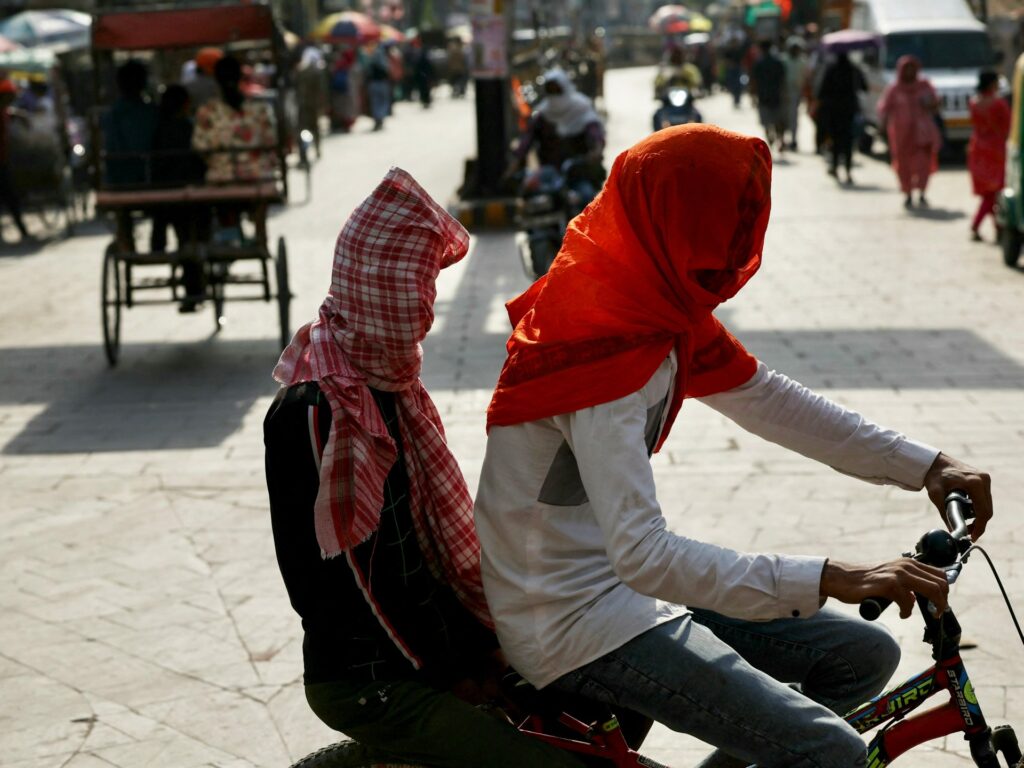Patna, India — Satendra Kumar felt unwell during a recent heatwave but forced himself to work to repay a loan for his daughter’s marriage. On May 30, temperatures were particularly high as he rode his bicycle to his job 59km from Patna, Bihar’s capital.
Kumar’s health worsened, and he requested a rare half-day off. On his way home, he lost consciousness under the extreme heat and collapsed less than 1km from his residence. His family found him dead at a nearby government-run health center by evening.
Suraj Kumar, 21, attributes his father’s death to the “unbearable heat,” as noted in the postmortem report.
“I’m quitting my studies to find a job,” said Suraj. “I have to take care of the loan repayments and household expenses.”
Schools were shut and hospitals set up “heat units” as temperatures in parts of India reached nearly 50°C (122°F) in May and June. The weeks-long heatwave killed over 200 people and caused more than 40,000 suspected heatstroke cases, according to the Ministry of Health and Family Welfare. Experts suggest the actual death toll is higher due to underreporting.
The severe heatwave has exacerbated social divides in India, particularly affecting marginalized communities, activists and researchers told Al Jazeera.
“Caste and class discrimination in India is so widespread that it impacts everything, including responses to disasters like heatwaves,” said Paul Divakar, a Dalit rights activist.
“Marginalized communities are the most vulnerable to this deadly heat.”

‘How are we supposed to cope?’
The Kumar family had long hoped to buy an air cooler for their small shanty, but financial constraints prevented it. They rely on cow dung for cooking fuel and can pack their belongings into one suitcase, said Sanju Devi, Kumar’s wife.
Aspura village, home to nearly 500 families primarily from the woodworking community, is among India’s “Other Backward Classes” (OBC). A recent survey recommended their inclusion in the “Scheduled Castes” category for better access to opportunities.
“We didn’t even have money for wood for the cremation,” Devi said. “How are we supposed to cope with this heat?”
Increasing temperatures and humidity have drastically reduced working hours for millions in India, according to Avinash Chanchal, senior campaign manager at Greenpeace India. “Their earnings have dropped, but expenses on heat-related measures have increased,” he explained.
A study by Greenpeace and the National Hawkers Federation found that 49.27% of street vendors in New Delhi lost income during heatwaves, with 80.08% noting fewer customers.
![- Creation Covenant Alliance India heatwave story [Mohammad Sartaj Alama/Al Jazeera]](https://www.aljazeera.com/wp-content/uploads/2024/07/IMG-20240703-WA0006-1719996940.jpg?w=770&resize=770%2C513)
‘This city is becoming unbearable to live in’
Mustafabad, one of New Delhi’s poorest areas, is filled with informal settlements engaged in waste management. Dua Khatoon, 59, said she left her survival to “the grace of Allah” during this summer’s heatwave.
“This place feels like an oven; like I’m in hell,” she remarked amid the smoke-blackened walls of her work area.
Khatoon earns 50 rupees ($0.6) for sorting through 10kg of waste. The rent for her home is 9,000 rupees ($110) per month. The family could afford an air cooler, but air conditioners remain out of reach for most Indians. Government surveys show that the wealthiest 5% own 53% of the country’s air conditioners.
The family is wary of the dangers of working in extreme heat.
In June, Khatoon’s daughter-in-law Fozia, 28, suffered heatstroke en route to work as a domestic worker. “I couldn’t breathe and my vision blurred,” Fozia recalled.
“The AC at my employer’s home saved my life. I had to take three days off to recover.”

Deepening segregation in cities
A Greenpeace study revealed a lack of awareness and government intervention on heat-related health issues in central India.
The study of Delhi’s street vendors found 97.6% needed medical access, 95.9% lacked washrooms, and 91.5% lacked drinking water. “The government isn’t preparing for this crisis,” said Chanchal. “They lack concrete plans.”
Divakar, the Dalit activist, noted that climate conditions and socioeconomic disparities have deepened segregation within cities.
“The inequality is evident in how these communities live and survive,” he said. The recent heatwave has reinforced caste-based discrimination.
“Policy regulation and stricter guideline implementation are needed, along with supporting marginalized communities,” Divakar added. “We need equity measures in wages, civic development, and financial inclusion.”
Chanchal called for a legally binding heat-action plan, including “vulnerability mapping” and comprehensive policies.
India, a significant emitter of greenhouse gases, is highly vulnerable to climate effects. A report by the Centre for Science and Environment found the country faced extreme weather on nearly 90% of days in 2023.
Divakar acknowledged India’s global commitments, including the Paris Agreement, but stressed the need for equity measures. “Without addressing equity, climate issues will remain problems for the elite while the most affected suffer.”
Original Story at www.aljazeera.com
